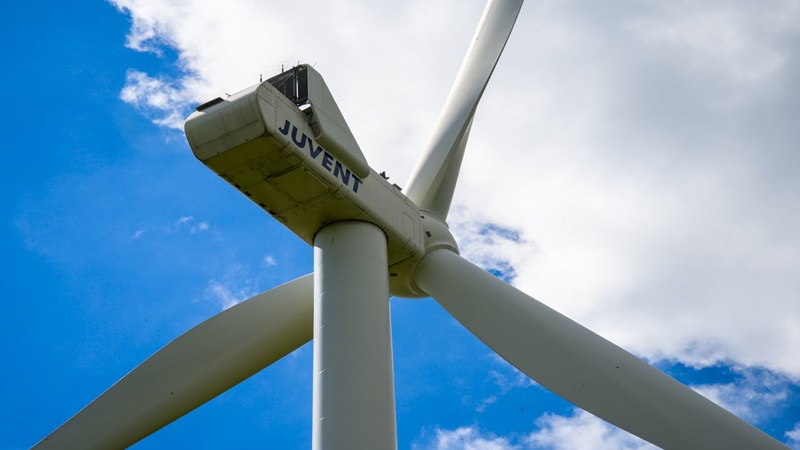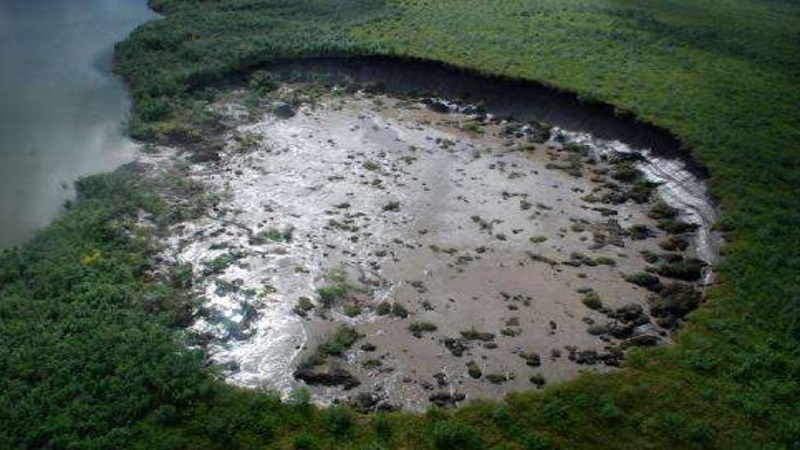
Billy Poon
Transforming Renewable Energy with Artificial Intelligence
Most Read Stories Today
-
Water Scarcity and Artificial Rainfall: The Positive and The Negative Effects of Cloud Seeding, including Health Hazards and Climate Implications.
-
Bridging the Gulf Between Scientific Knowledge and Public Understanding.
-
Renewable Energy in Rural Areas: Challenges, Opportunities, and Successful Rural Projects
-
Are African Plants Getting Ignored Amidst the Climate Change?
-
South Korea's floods: root causes and prevention strategies.
-
Climate Change's Grip on Northern Ghana's Agricultural Landscape.
-
Degenerative Impact of Hydrocarbons On The Environment.
-
Community-Based Adaptation: Land Management and Fire Prevention Techniques in the Heart of Mexico
-
Negative Impacts of Climate Change on Food Security in South Africa
-
Five most effective ways of communicating climate science to the public
Artificial intelligence (AI) is changing how we produce and consume renewable energy. AI technologies optimize systems to improve efficiency and effortlessly integrate different renewable energy sources.
Net zero emissions by 2050 is both the spirit of the times and carries a broad outlook; when AI becomes fault-tolerant, this vision can more easily be realized.
Improve Efficiency and Predictability
Renewables are inherently and inevitably variable. The sun doesn't always shine, nor the wind always blow--leading to fluctuations in energy production. AI addresses this problem through more accurate than ever meteorological predictions and energy output forecast models that use machine learning algorithms based on big data from weather stations, satellites, and historical patterns to predict the output of solar/wind power. These forecasts allow grid operators to plan more effectively, thus ensuring a stable energy supply.
For example, when AI predicts upcoming storms that will lead to a sharp decline in sunlight over large areas by analyzing wind directions and damage from previous storms, power stations can switch preemptively over to alternative sources or ramp up storage of energy reserves. Such foresight dramatically reduces waste and optimizes the use of renewable resources.
Optimizing Energy Storage and Distribution
AI also plays an integral part in energy storage and distribution. Energy storage systems, such as conventional batteries, offer a way to manage renewable energy's intermittent dependence on weather conditions. AI algorithms decide the best times for storing and releasing surplus power to ensure efficiency in balancing supply and demand.
Take a sunny day with a solar farm—it generates more power than the grid needs. AI systems will decide in real time whether to store the extra energy in batteries or send it directly into the grid, according to the price of electricity to date and what kind is needed from now on. This smart decision-making further reduces our reliance on fossil fuel backup systems, lowering carbon emissions one more step.
In distribution, AI enhances smart grid management. The traditional grid operates in one direction only--energy flows from power plants to consumers. However, smart grids offer a two-way energy flow accommodating decentralized energy sources such as rooftop solar panels. AI supervises and manages these complicated interactions, guaranteeing optimum energy flows and safeguarding against overload.
Integrating Various Sources of Energy
Another field in which AI shines a light is integrating various renewable energy sources. A successful energy mix must include solar, wind, hydropower, and biomass. AI integrates input from these different sources, ensuring a reliable energy supply. For instance, AI manages a hybrid renewable energy system consisting of solar panels, wind turbines, and hydroelectric plants.
With clouds covering the sun's rays, solar output decreases. The AI system compensates by picking up wind power or increasing hydroelectric output. In this Dynamic Balance art of work, flow for steady energy maintenance is maintained at maximized use levels for all available resources.
Being the Enabler of Decentralized Energy Production
Decentralized energy production is on the upswing. Individuals and companies produce their own renewable energies, posing opportunities and new challenges. AI helps deal with these decentralized systems, increasing their efficiency and reliability.
AI-enabled smart meters can monitor energy production and use it in real time, allowing consumers to learn from their habits and cut back on anything wasteful. Receiving insight into such patterns inspires saving and even helps decide when to sell surplus electricity from your solar cells.
Furthermore, Artificial intelligence can aggregate data from multiple decentralized sources to form virtual power plants that feed into the grid.
Reducing Maintenance Costs and Downtime
One of the biggest problems renewable energy systems face is maintenance and downtime. AI-powered predictive maintenance systems that monitor equipment state can forecast when parts will break down and save time lost due to failures. Sensors on wind turbines, solar panels, and other equipment send out reams of data, such as performance and load.
Using these data, machine learning algorithms analyze the signals for patterns indicating potential problems. For example, if the vibration pattern of a wind turbine changes, it may signal a bearing problem. The AI system alerts maintenance crews to inspect and repair the turbine to prevent downtime and reduce maintenance costs.
Driving Innovation and Research
AI also hastens the pace of innovation and research in renewable energy. AI discovers new materials or designs that improve energy efficiency and storage quality by analyzing large data sets from experiments with material properties and design. For example, it can predict the properties of new photovoltaic materials, giving a shortcut to bringing better solar panels to market.
Again, AI-driven simulations optimize wind turbine design, increasing performance while reducing costs. These improvements make renewable energy technologies more viable than traditional fossil fuels, speeding up the shift towards a clean energy future.
Conclusion
In the realm of renewable energy campaigns, artificial intelligence is a game-changer. Its ability to enhance efficiency, predictability, and integration between different kinds of energy sources is a must for achieving a goal of net-zero emissions by 2050. Maintenance costs can be reduced by optimizing energy storage and transmission and allowing production to be decentralized, and breakthroughs can be fostered. AI guarantees that systems for renewable energy are dependable, economical, and sustainable. As AI's potential is increasingly unearthed, the vision of a world fully supplied with renewable energy becomes ever more within reach.






 English
English العربية
العربية Български
Български 简体中文
简体中文 繁體中文
繁體中文 Hrvatski
Hrvatski Čeština
Čeština Dansk
Dansk Nederlands
Nederlands Suomi
Suomi Français
Français Deutsch
Deutsch Ελληνικά
Ελληνικά हिन्दी
हिन्दी Italiano
Italiano 日本語
日本語 한국어
한국어 Norsk bokmål
Norsk bokmål Polski
Polski Português
Português Română
Română Русский
Русский Español
Español Svenska
Svenska Català
Català Filipino
Filipino עִבְרִית
עִבְרִית Bahasa Indonesia
Bahasa Indonesia Latviešu valoda
Latviešu valoda Lietuvių kalba
Lietuvių kalba Српски језик
Српски језик Slovenčina
Slovenčina Slovenščina
Slovenščina Українська
Українська Tiếng Việt
Tiếng Việt Shqip
Shqip Eesti
Eesti Galego
Galego Magyar
Magyar Maltese
Maltese ไทย
ไทย Türkçe
Türkçe فارسی
فارسی Afrikaans
Afrikaans Bahasa Melayu
Bahasa Melayu Kiswahili
Kiswahili Gaeilge
Gaeilge Cymraeg
Cymraeg Беларуская мова
Беларуская мова Íslenska
Íslenska Македонски јазик
Македонски јазик יידיש
יידיש Հայերեն
Հայերեն Azərbaycan dili
Azərbaycan dili Euskara
Euskara ქართული
ქართული Kreyol ayisyen
Kreyol ayisyen اردو
اردو বাংলা
বাংলা Bosanski
Bosanski Cebuano
Cebuano Esperanto
Esperanto ગુજરાતી
ગુજરાતી Harshen Hausa
Harshen Hausa Hmong
Hmong Igbo
Igbo Basa Jawa
Basa Jawa ಕನ್ನಡ
ಕನ್ನಡ ភាសាខ្មែរ
ភាសាខ្មែរ ພາສາລາວ
ພາສາລາວ Latin
Latin Te Reo Māori
Te Reo Māori मराठी
मराठी Монгол
Монгол नेपाली
नेपाली ਪੰਜਾਬੀ
ਪੰਜਾਬੀ Afsoomaali
Afsoomaali தமிழ்
தமிழ் తెలుగు
తెలుగు Yorùbá
Yorùbá Zulu
Zulu ဗမာစာ
ဗမာစာ Chichewa
Chichewa Қазақ тілі
Қазақ тілі Malagasy
Malagasy മലയാളം
മലയാളം සිංහල
සිංහල Sesotho
Sesotho Basa Sunda
Basa Sunda Тоҷикӣ
Тоҷикӣ O‘zbekcha
O‘zbekcha አማርኛ
አማርኛ Corsu
Corsu Ōlelo Hawaiʻi
Ōlelo Hawaiʻi كوردی
كوردی Кыргызча
Кыргызча Lëtzebuergesch
Lëtzebuergesch پښتو
پښتو Samoan
Samoan Gàidhlig
Gàidhlig Shona
Shona سنڌي
سنڌي Frysk
Frysk isiXhosa
isiXhosa
Terms & Conditions
Subscribe
Report
My comments